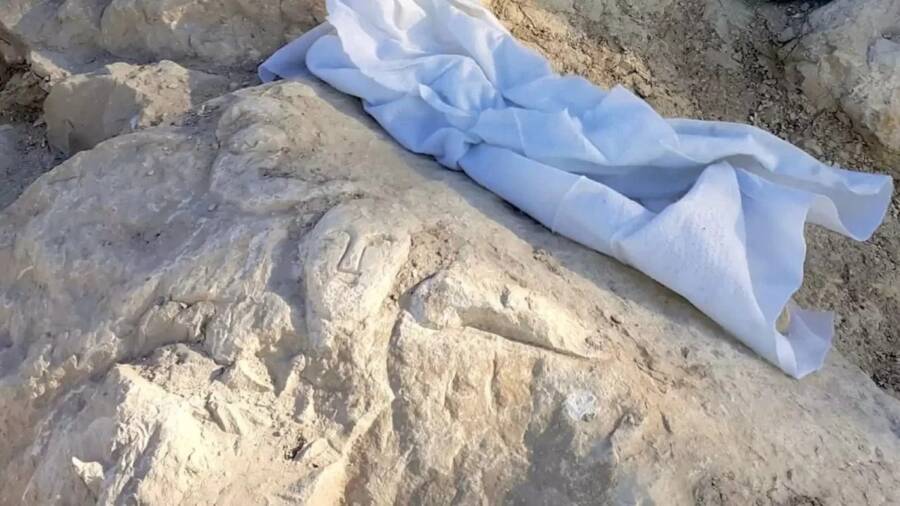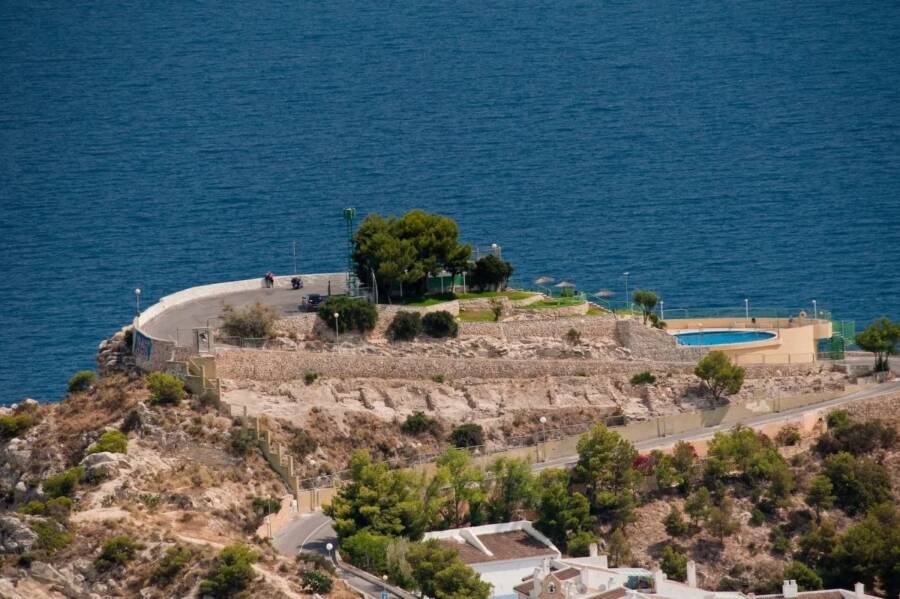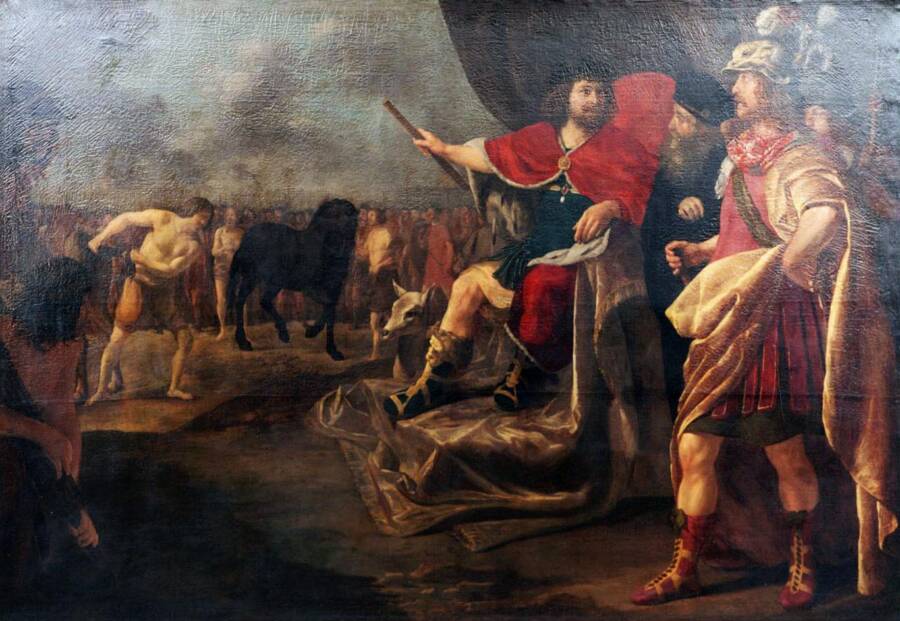In addition to the phallus, the carvings discovered at Tossal de La Cala in Benidorm, Spain, include a face and a cornucopia.
University of AlicanteThe carvings may have had ritualistic significance , or they may have just been Roman graffito .
Amid the impressive remains of the ancient Romanist fort Tossal de La Cala in Spain , archaeologists from the University of Alicante have chance echoes of its former inhabitants . digging at the fortress have revealed three carvings in the rock : a face , a genus Phallus , and a cornucopia .
According to Jesús Moratalla , the head of the digging , these carvings stand as “ a relief of outstanding historical importance . ”

University of AlicanteThe carvings may have had ritualistic meaning, or they may have simply been Roman graffiti.
Archaeologists trust that the three carving are around 2,000 years erstwhile . They measure 57 by 42 centimeters but may have once been part of something much larger . accord toHeritage Daily , it come along that the upper right section of stone where the carving were found is drop .
The missing section is n’t the only diachronic mystery surrounding the carvings . Archaeologists are also unsure if the carvings were simply graffiti left by a world-weary soldier or if they had some kind of ritualistic significance .
Indeed , all three carvings could have emblematic significance .

University of AlicanteThe rock carvings offer a tantalizing peek at Tossal De La Cala’s dramatic history.
University of AlicanteThe stone carving offer a tantalizing peek at Tossal De La Cala ’s striking history .
AsAncient Originsexplains , priapic mental imagery played an important role in ancient papistic culture . They could be used to intend fertility , power , and good luck and could also be used as protective covering against the “ evil eye . ” Because of this protective ingredient , Romans sometimes wear out phallic amulets , hung phalluses over their doorways , or incorporate them into artistic creation like fresco .
Likewise , the profuseness symbol — a French horn - shaped basket overflowing with yield , vegetables , and drinking — held ritualistic meaning for ancient Romans . This “ Horn of Plenty ” symbolizes copiousness and prosperity . concord toArkeo News , it amount from the fable of Heracles , who purportedly rive off one of the horns of the river god , Achelous .

Public DomainA 17th-century depiction of Quintus Sertorius, who once allegedly said: “You can better pull out a horse’s tail hair by hair than all at once.”
The phallus and cornucopia , together with the face , have led some to speculate that the three cutting may symbolize a Roman graven image or goddess . Ancient Originstheorizes that they could represent Priapus , the Greek god of fecundity , who is often depicted with a cornucopia and a large phallus .
However , there are also other Romanist deity who are depicted with the cornucopia , who represent the harvest , prosperity , or spiritual abundance .
In any eccentric , the three carving discovered at Tossal de La Cala offer a fascinating look at the garrison ’s striking story .
The internet site , first excavate between 1940 and 1965 , was likely built by a popish general named Quintus Sertorius around 77 B.C.E. Then , the Sertorian Civil Wars ( 80 to 72 B.C.E ) devil between Roman insurgent called Sertorians and the Roman authorities . Sertorio , a notable Roman national leader and military commander , aligned himself with local tribes in Hispania ( present - day Spain ) to rebel against the regime .
Public DomainA seventeenth - hundred depiction of Quintus Sertorius , who once allegedly say : “ you may advantageously tear out a horse ’s tail hair by hair than all at once . ”
Sertorio successfully combat against the papist regime but was murdered by conspirators in 72 B.C.E.
As such , the three sculpture come upon at Tossal de La Cala trance a gripping moment in ancient Roman history . Perhaps represent a Roman god or goddess — and perhaps made as a mark of protective covering as signified by the phallus — they extend a compelling facial expression into the fierce mogul dynamic that burned throughout Roman society .
But then again , perhaps the carvings were only made by a Roman soldier , bored with obligation , who decide to enroll a few figures into the rock music .
After reading about the 2,000 - class - old papist cutting found in Spain , discover the fascinating tale of the Romangraffiti find out in the ruin of the ill-starred city of Pompeii . Or , see how aHercules - similar statue was discovered in a Roman sewer .